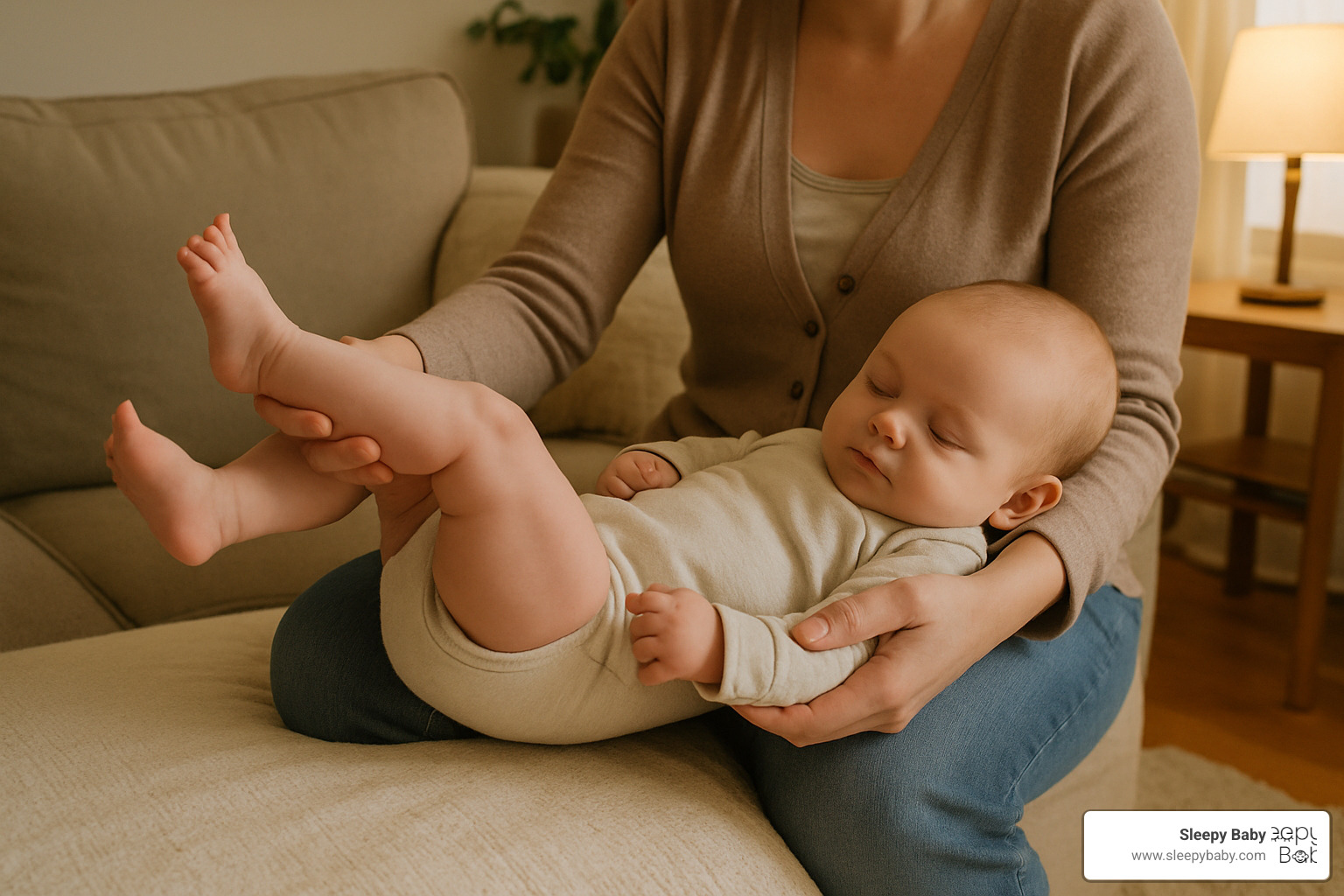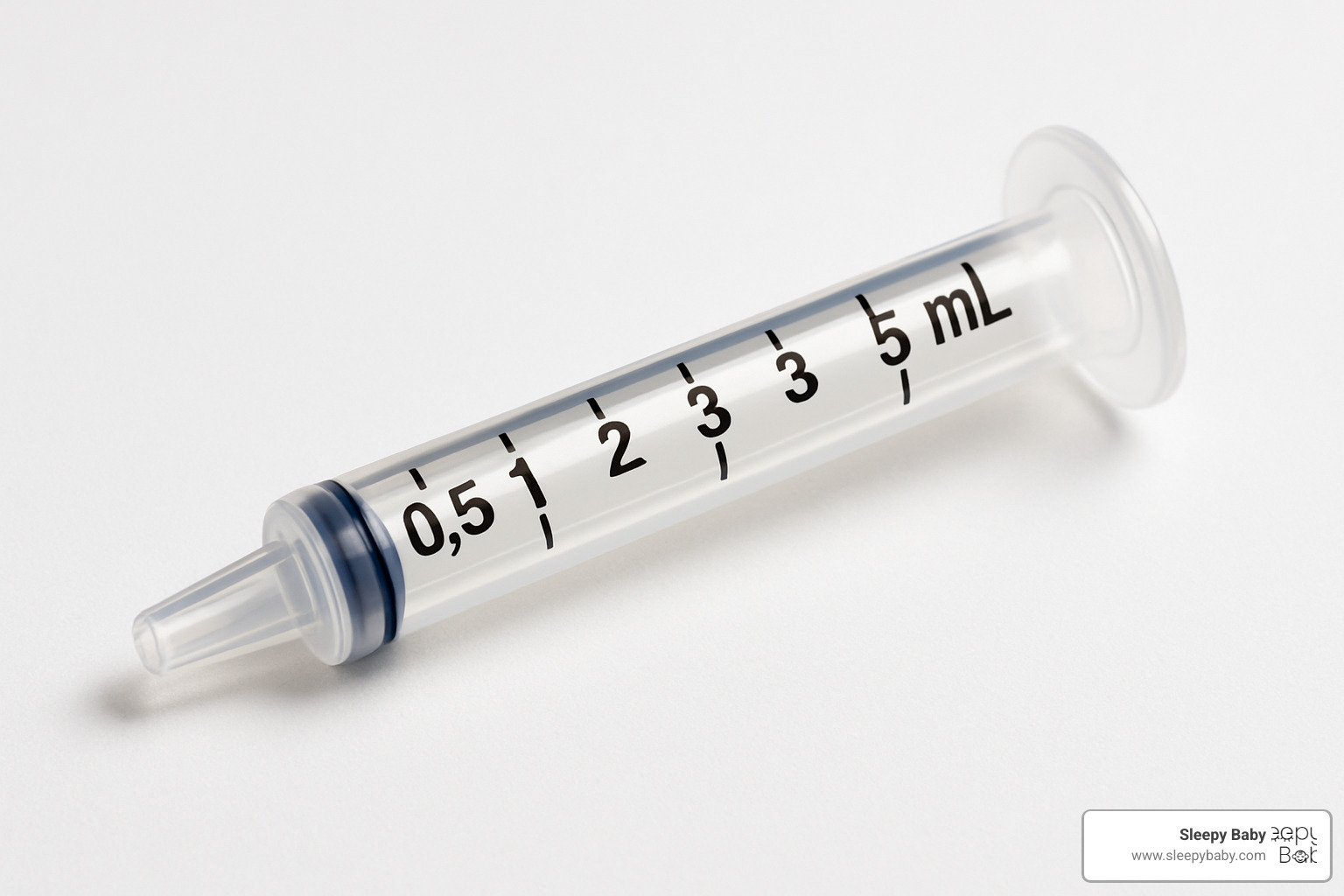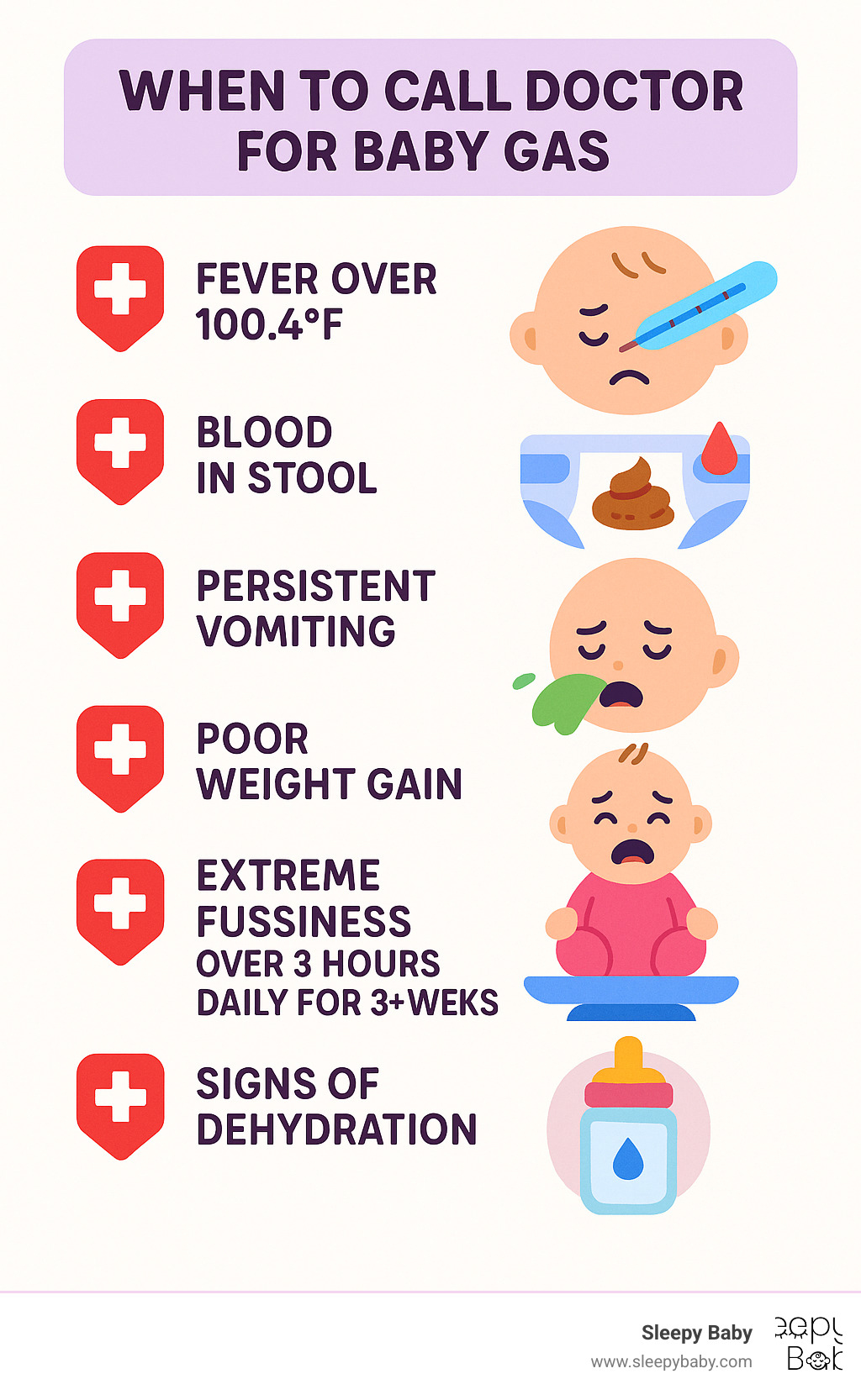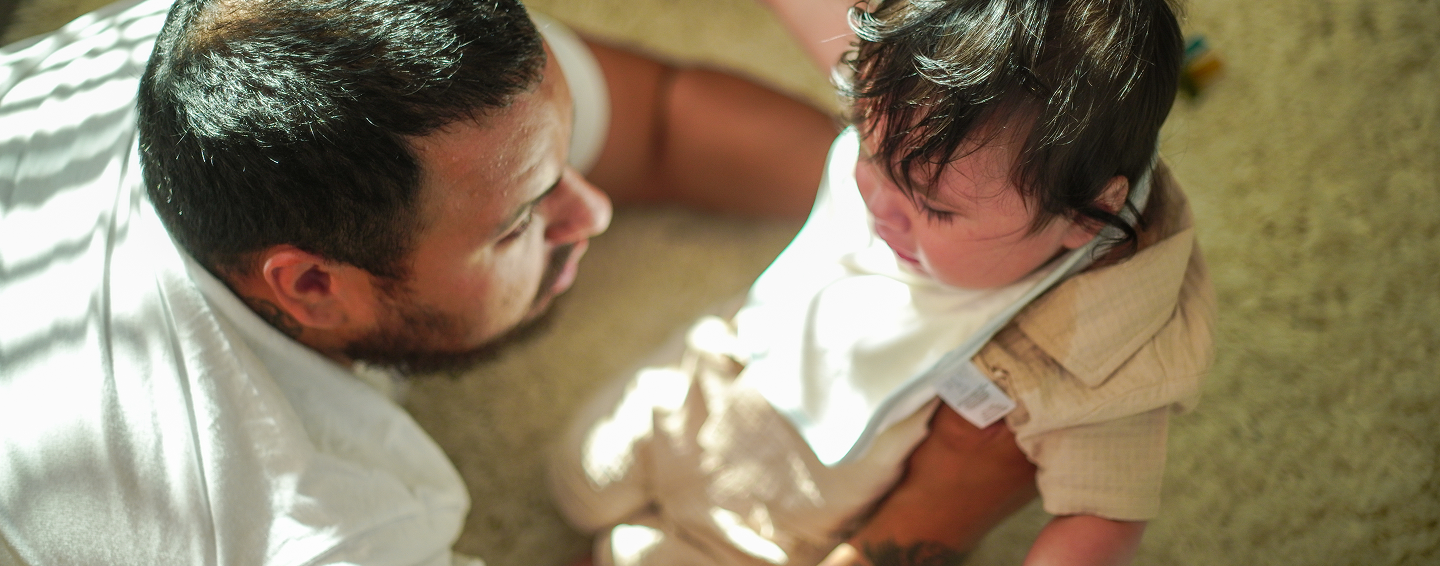Why Every Parent Needs a Baby Gas Game Plan
Best baby gas medicine options can feel overwhelming when you're facing your first sleepless night with a gassy, crying infant. Gas happens to every baby - they can pass gas 13-21 times each day, and all babies experience gas discomfort in their first two months of life.
Top Baby Gas Medicine Options:
- Simethicone drops (Mylicon) - FDA-approved, safe for newborns, up to 12 doses daily
- Gripe water - Herbal blend with sodium bicarbonate, mixed research on effectiveness
- Probiotic drops - Support gut health, limited data for gas relief specifically
- Fennel oil drops - Natural option, centuries-old remedy
Gas discomfort typically peaks at six weeks and improves dramatically by three months. While 20% of babies develop colic, most gas issues are normal development as your little one's digestive system matures.
The good news? You have safe, effective options to help ease those uncomfortable moments when your baby's tummy is acting up.
I'm Gary Harutyunyan, and as a new father who spent countless nights searching for the best baby gas medicine solutions, I understand the desperation of wanting to help your little one feel better. My experience creating baby comfort products has taught me that combining the right medicine with gentle soothing techniques often works best.

What Triggers Tummy Trouble?
Picture this: your baby has spent nine months in a perfectly controlled environment, and suddenly they're dealing with air, milk, and a brand-new digestive system that's still figuring things out. It's no wonder those tiny tummies need time to adjust!
The biggest culprit behind infant gas is air swallowing during feeding. Every time your baby nurses or takes a bottle, they naturally gulp some air along with their milk. This becomes even more pronounced when babies are crying before feeds - they're essentially taking in extra air with each sob.
Your little one's immature digestive system is also working overtime to process milk. Those beneficial gut bacteria that help adults digest food smoothly? They're still moving in and setting up shop in your baby's intestines. This means some milk components undergo bacterial fermentation, creating gas as a natural byproduct.
Feeding technique plays a bigger role than many parents realize. A poor latch during breastfeeding or bottle nipples that allow too much air flow can turn feeding time into an unintentional air-swallowing session. Some babies also show formula sensitivity to certain proteins or ingredients, which can increase gas production.
For breastfeeding moms, your maternal diet might occasionally influence your baby's comfort level, though this connection isn't as strong as many people believe. The ironic part? Excessive crying itself causes more air swallowing, creating a frustrating cycle where gas discomfort leads to crying, which leads to more gas.
Here's something that might surprise you: farting in those first days of life actually signals that your baby's gut is "waking up" - it's a positive sign of normal development, not a problem to solve with the best baby gas medicine right away.
Common Signs You're Dealing with Gas, Not Colic
Learning to read your baby's signals makes choosing the right relief method so much easier. Gas discomfort has its own signature moves that are quite different from more serious issues like colic.
When your baby is dealing with gas, you'll notice them pulling their legs up toward their chest in a classic "trying to squeeze it out" position. Their face turns red and strained during gas episodes, and their belly feels hard and bloated until they successfully pass the gas.
The key difference with gas? Your baby finds relief after passing gas or burping. They might fuss for a few minutes, but once that gas bubble moves along, they're back to their happy selves.
Colic presents differently - it involves inconsolable crying for at least three hours per day, three days per week, for three weeks straight. Unlike gas episodes, colic crying doesn't respond to typical soothing methods and often occurs at predictable times regardless of feeding schedules.
If your baby only fusses briefly while working out gas bubbles but returns to contentment afterward, you're likely dealing with normal digestive development rather than a medical concern requiring intensive intervention.
The Best Baby Gas Medicine Types Explained
After researching and testing various options, we've found that the best baby gas medicine depends on your baby's specific needs and your comfort level with different approaches. Here's our comprehensive breakdown of the most effective options.
Simethicone Drops: The Classic "Best Baby Gas Medicine"
Simethicone drops remain the gold standard for infant gas relief, and for good reason. The active ingredient works by breaking up gas bubbles in your baby's digestive tract, making them easier to pass naturally.
How simethicone works:
- Coalesces small gas bubbles into larger ones
- Helps gas move through the digestive system more efficiently
- Not absorbed into the bloodstream, making it extremely safe
- Works within 30 minutes of administration
Key benefits:
- FDA-approved for all ages, safe for newborns
- Can be used up to 12 times per day
- No known side effects when used as directed
- Works preventively when given before feeds
The research shows mixed results on effectiveness - while simethicone is scientifically proven to break up gas bubbles, some studies question whether this translates to meaningful symptom relief. However, the safety profile is excellent, and many parents report positive results.
Dosing guidelines:
- Infants under 24 lbs: 0.3 mL (20 mg simethicone)
- Children over 24 lbs: 0.6 mL (40 mg simethicone)
- Can be given at every feeding if needed
- Mix with 1 oz of formula, breast milk, or water if desired
For detailed product comparisons and reviews, check out our Relief in a Drop: Top Infant Gas Drops Reviewed guide.
Gripe Water or Fennel-Based Solutions: Could This Be Your Baby's "Best Baby Gas Medicine"?
Gripe water represents a more traditional approach to infant gas relief, typically containing sodium bicarbonate and herbal ingredients like fennel, ginger, or chamomile.
Common gripe water ingredients:
- Sodium bicarbonate (reduces stomach acidity)
- Fennel oil (traditionally used for digestive comfort)
- Ginger (anti-inflammatory properties)
- Chamomile (calming effects)
The evidence challenge: While gripe water has been used for generations, solid research on its effectiveness is limited. Some concerns include:
- Sodium bicarbonate can cause alkalosis if overused
- Herbal ingredients may cause allergic reactions in sensitive babies
- Quality and potency can vary between brands
- Not FDA-regulated like simethicone drops
When gripe water might help:
- Babies who seem to respond better to herbal approaches
- General fussiness beyond just gas symptoms
- Parents preferring more "natural" remedies
We generally recommend starting with simethicone drops due to their proven safety profile, but gripe water can be worth trying if other methods aren't effective.
Probiotic Drops & Beyond
Probiotic drops represent an emerging approach to infant digestive health, focusing on supporting healthy gut bacteria development rather than treating gas symptoms directly.
How probiotics may help:
- Support beneficial bacteria growth in the gut
- May reduce overall digestive discomfort
- Could help with long-term digestive health
- Some studies suggest benefits for colic (though not specifically gas)
Current research limitations: The data on probiotics for infant gas relief specifically is limited. While probiotics show promise for adult digestive issues and some infant conditions, more research is needed to confirm effectiveness for gas symptoms in healthy infants.
Typical dosing:
- Usually 5 drops once daily
- Can be mixed with breast milk or formula
- Use within 28 days of opening
- Store according to manufacturer instructions
For comprehensive information about probiotic benefits and safety, review the Probiotics: What You Need To Know resource.

Drug-Free vs. Medicinal Relief: Which Works Faster?
Sometimes the best baby gas medicine isn’t medicine at all. We’ve found that combining gentle physical techniques with appropriate medications often provides the fastest, most complete relief.
Immediate drug-free techniques:
- Burping mid-feed and after – Pause feeding every 5-10 minutes for breastfed babies, every 2-3 oz for bottle-fed
- Bicycle leg movements – Gently move baby’s legs in a cycling motion to help push trapped gas through
- Tummy time – 20-30 minutes after feeding (never immediately after eating)
- Gentle tummy massage – Clockwise circular motions to encourage gas movement
- Colic carry – Hold baby tummy-down across your forearm for gentle pressure
Feeding adjustments:
- Keep baby’s head lifted above the stomach during feeds
- Use slow-flow nipples to reduce air intake
- Ensure proper latch for breastfeeding
- Try anti-colic bottles with venting systems
- Feed before baby becomes overly hungry and cries excessively
Our comprehensive Gas Relief 101: Easing Your Baby's Discomfort guide covers these techniques in detail.
Comparison Table: Medicines vs Manual Techniques
| Method | Onset Time | Age Appropriate | Evidence Strength | Cost |
|---|---|---|---|---|
| Simethicone drops | 15-30 minutes | All ages | Moderate-Strong | $8-15 |
| Gripe water | 10-20 minutes | 2+ weeks | Limited | $6-12 |
| Probiotic drops | Days-weeks | All ages | Limited for gas | $15-25 |
| Burping technique | Immediate | All ages | Strong | Free |
| Bicycle legs | 5-10 minutes | All ages | Moderate | Free |
| Tummy massage | 10-15 minutes | All ages | Moderate | Free |
| Feeding adjustments | Preventive | All ages | Strong | Varies |
How to Choose and Use Baby Gas Treatments Safely
Selecting the best baby gas medicine for your little one requires understanding proper dosing, safety considerations, and when to seek medical help.
Weight-based dosing guidelines:
- Always follow package instructions precisely
- Use only the measuring device provided with the product
- Never substitute household spoons for medical droppers
- Refer to weight first, then age when determining dose
Safety considerations:
- Check expiration dates before each use
- Discard gripe water 3 months after opening
- Store products at room temperature, away from heat and light
- Watch for allergic reactions (rash, swelling, difficulty breathing)
- Separate simethicone from thyroid medications by at least 4 hours
Red-flag symptoms requiring immediate medical attention:
- Fever above 100.4°F (38°C)
- Blood in stool
- Persistent vomiting
- Refusal to eat or drink
- Signs of dehydration
- Bluish skin or lips
- Extreme lethargy or difficulty waking
For a detailed walkthrough of choosing the right product for your baby, see our Step-by-Step Guide to Choosing Effective Infant Gas Drops.

When "Best Baby Gas Medicine" Isn't Enough—Time to Call the Doctor
While most infant gas is completely normal, certain situations warrant professional medical evaluation. According to Scientific research on AAP colic guidelines, contact your pediatrician if:
- Gas interferes with feeding, sleeping, or bowel movements
- Your baby shows signs of failure to thrive or poor weight gain
- Symptoms persist beyond 4-6 months of age
- You notice changes in stool consistency, color, or frequency
- Gas symptoms are accompanied by fever or other illness signs
- You feel overwhelmed or concerned about your baby's wellbeing
Trusting your instincts as a parent is important. If something feels wrong, it's always better to consult with your healthcare provider.

Frequently Asked Questions About Baby Gas Medicines
As a parent who's been through countless sleepless nights with a gassy baby, I know you have questions about which treatments actually work. Let me share what I've learned from research and real-world experience with the most common concerns about best baby gas medicine options.
Do Simethicone Drops Really Work?
Here's the honest truth about simethicone drops - the science is a bit complicated, but the real-world results speak for themselves in many cases.
What we know for certain: Simethicone absolutely breaks up gas bubbles in your baby's digestive tract. That's not up for debate - it's basic chemistry. The ingredient works by reducing the surface tension of gas bubbles, allowing them to combine into larger bubbles that are easier for your baby to pass.
Where it gets tricky: Whether breaking up those bubbles translates to meaningful relief varies from baby to baby. Some studies show limited benefit, while countless parents swear by the results they see.
My take after helping thousands of families? Simethicone drops work best when you use them preventively rather than reactively. Give them before feeds when you know gas is typically a problem, rather than waiting until your baby is already uncomfortable.
The safety profile is excellent - simethicone isn't absorbed into your baby's bloodstream, making it incredibly safe even for newborns. If you don't see improvement after 1-2 weeks of consistent use, it's perfectly fine to discontinue and try other approaches.
Is Gripe Water Safe for Newborns?
Gripe water safety really depends on what's in the bottle and how old your baby is. Unlike simethicone drops, gripe water isn't FDA-regulated, which means quality and ingredients can vary significantly between brands.
The age factor matters: Most reputable manufacturers recommend waiting until your baby is at least 2 weeks old, and some suggest waiting until 1 month. Very young newborns have sensitive digestive systems that may not handle herbal ingredients well.
What to look for in safe gripe water: Choose formulations that are alcohol-free and sugar-free. Be particularly cautious with products containing sodium bicarbonate for very young infants, as this can affect their delicate pH balance.
Watch for reactions: Since gripe water contains herbal ingredients like fennel, ginger, or chamomile, some babies may have allergic reactions. Start with a small dose and watch for any changes in behavior, rash, or digestive upset.
My recommendation? Always check with your pediatrician before trying gripe water, especially for babies under 4 weeks old. While many parents find it helpful, the lack of regulation means you need to be extra careful about brand selection.
Can My Diet Make My Breastfeeding Baby Gassy?
This question comes up in nearly every conversation I have with breastfeeding mothers, and I understand why - when your baby is uncomfortable, you want to do everything possible to help.
The research reality: There's no universal list of "forbidden foods" that will make every breastfeeding baby gassy. Studies show no absolute correlation between specific maternal foods and infant gas across all babies. However, some individual babies do seem sensitive to certain foods in their mother's diet.
Common suspects include: Caffeine, beans, cruciferous vegetables like broccoli and cabbage, dairy products, and spicy foods. But here's the important part - what affects one baby might not affect another at all.
A practical approach works best: Instead of drastically restricting your diet (which can actually be counterproductive for your health and milk supply), try keeping a simple food and symptom diary. Note what you eat and when your baby seems particularly gassy or fussy.
If you notice a pattern, try eliminating one suspected food at a time for 1-2 weeks. Then reintroduce it to see if symptoms return. This methodical approach helps you identify real triggers versus coincidental timing.
The benefits of breastfeeding far outweigh potential dietary triggers for most babies. A well-nourished, less stressed mother usually means a happier baby overall. If you're concerned about dietary connections, consider working with a lactation consultant who can help you steer this without compromising your nutrition.
Conclusion
Finding the best baby gas medicine for your little one doesn't have to feel overwhelming, even though it might take some patience to find what works best. The good news is that most babies naturally outgrow their gas troubles by 3-4 months as their tiny digestive systems learn how to work more efficiently.
Here's what we've learned through research and real parent experiences: simethicone drops offer the safest, most well-studied option when you need medication. They're FDA-approved, can't hurt your baby, and work by simply breaking up those uncomfortable gas bubbles. But don't overlook the power of gentle techniques like bicycle legs, proper burping, and tummy massage - these drug-free approaches often work just as well, sometimes even better.
The truth is, every baby is wonderfully unique. What brings instant relief to your friend's little one might not work for yours, and that's completely normal. Many parents find that combining medicine with comfort techniques gives the best results. Maybe it's simethicone drops followed by gentle leg movements, or perhaps gripe water paired with a soothing tummy rub.
What matters most is that this phase is temporary. Those sleepless nights dealing with a gassy, uncomfortable baby won't last forever. As your little one's digestive system matures, the intense gas episodes will fade into memory.
While you're navigating these challenging weeks, gas discomfort often makes sleep harder for everyone in the house. At Sleepy Baby, we understand how exhausting it can be when your baby can't settle comfortably. Our rhythmic patting sleep aids can provide that extra layer of soothing comfort your little one needs, mimicking the gentle touch that helps babies relax and drift off to sleep naturally.
For even more strategies to help your baby feel better, check out our comprehensive guide From Bloat to Bliss: Relieving Gas Pains Quickly.
Trust your instincts as a parent. If something feels wrong or you're worried about your baby's symptoms, don't hesitate to call your pediatrician. You know your baby better than anyone else.
You're doing an amazing job navigating this tricky phase. With the right combination of safe treatments, gentle techniques, and plenty of patience, you'll help your baby through this completely normal part of growing up. Better, more peaceful nights are coming for both of you.




